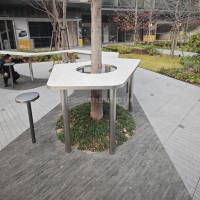Welcome to the website for landscape facilities products and knowledge.
How does the trash can’s shape impact its compatibility with automated waste collection systems?
The shape of a trash can plays a critical role in determining its compatibility with automated waste collection systems. These advanced systems rely on mechanical arms or lifts to empty bins, requiring standardized designs for seamless operation.
1. Round vs. Rectangular Bins
Round trash cans may struggle with alignment in automated systems designed for rectangular containers. The latter often feature flat backs or edges, ensuring secure gripping by robotic arms. Irregular shapes can cause misalignment, leading to spillage or failed pickups.
2. Lid Design and Clearance
Automated systems require lids that open smoothly during collection. Overhanging or bulky lids may interfere with mechanical arms, while streamlined, hinged designs improve compatibility.
3. Weight Distribution
Unevenly shaped bins can tip during lifting, increasing the risk of accidents. Symmetrical designs with low centers of gravity enhance stability during automated emptying.
4. Material and Durability
While not directly related to shape, flexible or collapsible materials in unconventional designs may fail under mechanical stress, unlike rigid, uniform containers.
Optimizing trash can shape for automated systems reduces operational inefficiencies, lowers maintenance costs, and supports smarter waste management infrastructure. Municipalities and manufacturers must collaborate to standardize designs that balance functionality and automation readiness.
Related search:

Recommendation
An outdoor bar counter with stainless steel and terrazzo materials in an irregular shape